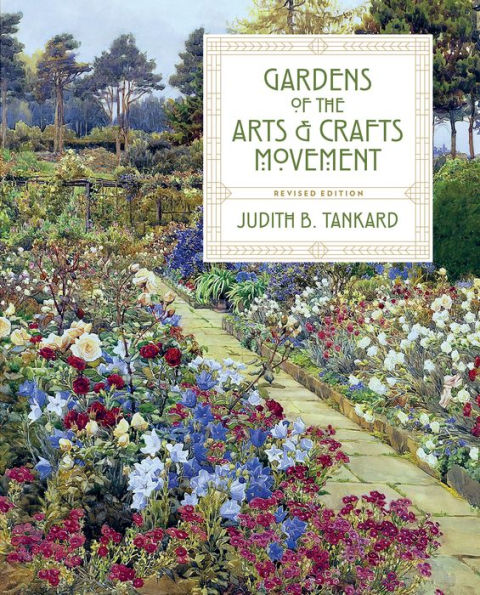Read an Excerpt
Introduction In the 1870s, England began to emerge from the heavy shroud of Victorian design sensibilities by embracing a new aesthetic that would have ramifications on the design of houses, interiors, and decorative arts until the First World War. The Aesthetic Movement, which centered on the world of James McNeill Whistler and Oscar Wilde, ushered in a new concept in domestic architecture and interior design known as the “The House Beautiful.”1 The concept of artistic houses characterized by the lightness of their interiors and decorated with beautiful objects was a welcome relief from the heavy furnishings, dark interiors, and somber palette of the Victorian era. This new aesthetic was especially appealing to the growing middle classes with newfound artistic yearnings. The parallel Queen Anne Movement, with its distinctive style of architecture that harked back to an earlier period in English history, took hold in London’s newly fashionable enclaves, such as Chelsea and Bedford Park. The leading architect was Richard Norman Shaw (1831–1912), who, along with Ernest J. May, designed the artists’ suburb in Bedford Park. There, red-brick houses featured picturesque turrets and gables, with artistic interiors in soft, pleasing colors. The Queen Anne style was personified in nursery books written and illustrated by Walter Crane, Randolph Caldecott, and, above all, Kate Greenaway, whose books Under the Window (1878), Mother Goose (1881), A Day in a Child’s Life (1881), and Marigold Garden (1885) depict caricatures of Shaw houses. Her own brick house in Hampstead was designed by Shaw in 1885. In her books, children decked out in sunbonnets play outdoors amid green croquet lawns and gardens filled with colorful flower borders and enormous topiary shrubs and trees. The steep, red-tile roofs of houses peek over the tops of high green hedges and garden walls. Young ladies enjoy a leisurely afternoon tea on the lawn, with flower borders bursting with sunflowers and roses and the Shaw-inspired house on the other side of the wall. The Queen Anne style, for all its quaintness, was more suited to townhouses, shops, and suburban neighborhoods than to country houses, for which something more traditionally English was called for.2 It was during this period that former country seats were replaced by smaller houses inspired by old English models of many forms. According to Ernest Newton (1856–1922), one of Shaw’s pupils, these pioneer architects “aimed at catching the spirit of the old building rather than at the literal reproduction of any defined style.”3 Newton’s genteel houses, such as Fouracre, in Winchfield, Hampshire, of 1901, definitely catch this spirit. The red-brick house, with decorative bands of trim and the front door opening out onto the garden, is simple, genial, and welcoming. As with many of the architects of the era, Newton’s career advanced from Queen Anne and Tudor to Georgian revivals. Shaw was a versatile architect best known for his old English style. His country houses, such as Cragside in Northumberland, are generously sized and include half-timbering and other traditional details. Perched on a steep ledge, Cragside is surrounded by acres of naturalistic woodland gardens (primarily rhododendrons, heathers, and alpines) and numerous water features. In addition to Shaw, the leading practitioners of the new architecture were George Devey and Philip Webb. Devey (1820–86), a superb watercolor artist known for his picturesque approach to design, was one of the first Victorian architects to create houses based on the local vernacular, an important issue for Arts and Crafts architects. Devey’s sympathetic restorations of older buildings were drawn from an extensive knowledge of Elizabethan and Jacobean architecture. Philip Speakman Webb (1831–1915) undoubtedly had the most far-reaching influence of the trio. His houses evoke the old in detailing but are innovative in planning, reflecting his passion for traditional building and local materials without copying them in a historicist fashion. A master of understatement, Webb profoundly influenced the coming generation of architects. Standen, which he designed in 1891 for London solicitor James Beale, is his masterpiece. The brick-and-stone house, with its distinctive wooden gables and tile-hung façade, takes its cue from the old farm buildings on the site that other architects might have torn down. Webb’s unusual sensitivity to vernacular buildings and details had an enormous influence on the design of country houses in England.

















